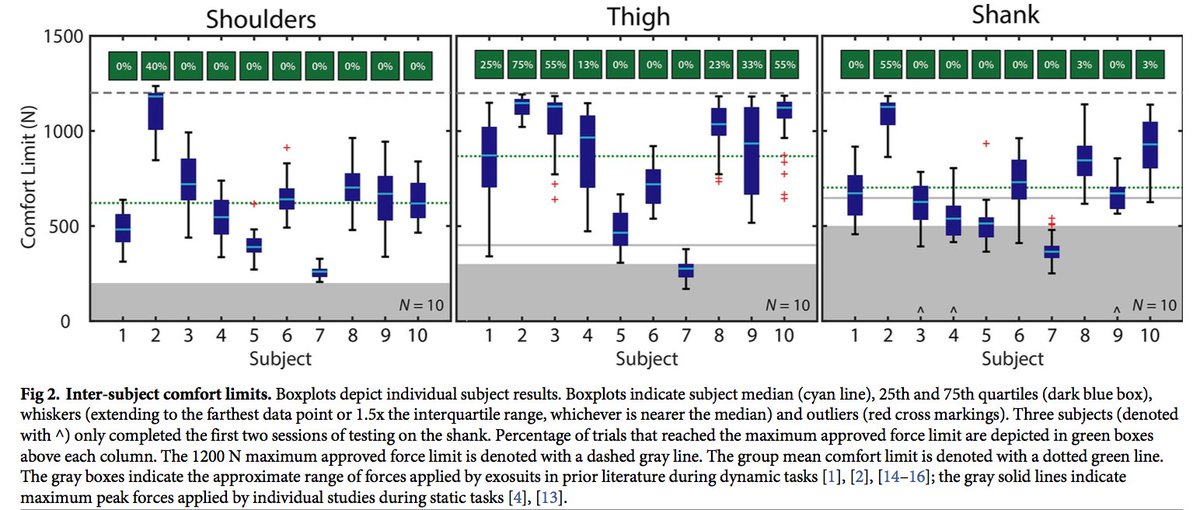So… We pulled on people with a robot until they told us to stop. Turns out you can yank on shank, thigh & shoulders w/ about one full body weight of force (on avg) before people reach their comfort limit. This work informs design of assistive #exosuits 1/
journals.plos.org/plosone/articl…
journals.plos.org/plosone/articl…

We discovered that if we pull on people over multiple days, then by the 4th day they tolerated 20-35% higher forces than on the 1st day, before reaching their comfort limit. Multi-day habituation (to forces from exo/robot) makes a big difference in user comfort & experience! 2/
For as strange as this study sounds it was quite useful b/c it enabled us to evaluate & confirm that our back- & ankle-assist exos exert forces far below observed comfort limits. The findings also help inform future design concepts for augmenting human movement & capabilities. 3/ 

Over the last decade exo technologies have shown clear & strong potential to assist users (reduce metabolic rate, muscle activity, etc). But ultimately if we want people to use & benefit from exos then we also need to understand & design for practical factors like comfort. 4/
This comfort study was one I wanted to do for years. Thx @MatthewYandell for leading it & carrying out the work with diligence & care. This marks the final chapter of his dissertation being published, congrats Matt! Proud of all you accomplished @VanderbiltU @EngineeringatVU 5/5
• • •
Missing some Tweet in this thread? You can try to
force a refresh






